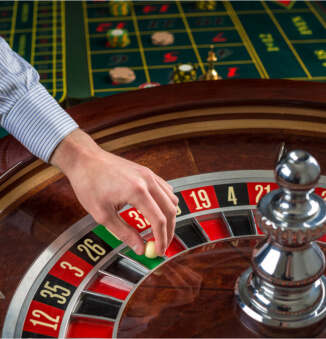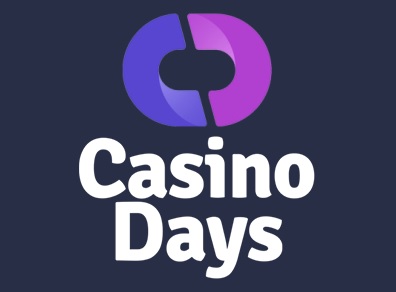Live Roulette
Roulette is a timeless classic of casino table gaming. Thrilling, risky and rewarding to those who bet more recklessly, roulette is archetypal of casino gaming and live online casino play. Fun, rewarding and deceptively layered, there is more to the roulette wheel than meets the eye. Literally translated from French as ‘little wheel,’ roulette is extremely seductive to casino lovers at every level from high-rolling big timers to casual players and small time gamers. Because of the scope for strategy, tactics and personal expression within this apparently simple game, there are a variety of tactics and approaches one can take when playing roulette. These range from highly aggressive and strategic to completely nihilistic and, literally, freewheeling. Because roulette is, in essence, a game of pure chance and probability, for many it has come to represent casino gambling, embodying all of the thrills, spills and heart-racing excitement of real casino play. If you are looking to play your first game of live roulette or are already an experienced player aiming to up the ante and improve your skills and knowledge, we know that you will find this page useful. Here, you will find all you need to know about live roulette table probabilities, variations of the game, strategic options and the best casinos that feature live roulette play.
How to Play Roulette
Roulette has become famous for its (apparent) simplicity, and this is why it is such a firm favourite among both experienced players and casino ‘newbies’ alike. It could not be easier to get the ball rolling and start your love affair with the roulette wheel. The basic premise is this: at your table, a croupier will spin the roulette wheel in one direction and drop the ball in the other. The aim of the game is to correctly guess where the ball will land on the wheel when it loses momentum.
A roulette wheel is composed of either 37 (for European roulette) or 38 (for American roulette) numbered squares, alternating between red and black. There are also one or two green-coloured blocks which represent the numbers 0 and 00 (the 00 block is only in American roulette) as well as an additional inner circle of separators which correspond to the outer ring’s numbered squares.
It is the roulette player’s job to try and bet which number and/or colour the ball will land on when the wheel comes to a stop. Players can either bet on a single number or strategically spread bets using multiple numbers or colour blocks across the wheel. If the ball’s final resting place corresponds to one of your bets, you win! In its most simple and purest form, roulette is a game of chance and probability, however, there is potential for skill-building and strategy within the game.
Roulette Rules
The rules of roulette are minimal. The freedom and simplicity of the game are what make it such an enduring classic amongst casino lovers.
The majority of rules in roulette are related to limits and play. For example, how and when players can bet, the numbers or ranges of numbers that can be bet on and the limit value of bets at any given roulette table.
Roulette tables will most often impose minimum and maximum limits, and this depends on the limit value of that particular casino and table. Bets can be placed with the croupier or online dealer until they announce that no more bets may be taken. Once all final bets have been placed, the croupier will spin the wheel and drop the ball. Players must then wait for the wheel to stop and the ball to land, which is the most thrilling and nail-biting aspect of the roulette experience. Once a winning number/colour has been established, it will be marked on the table with a ‘dolly’ or ‘dummy’ by the croupier. Winning bets will be calculated and paid out, after which the winning ‘dolly’ will be removed and the table cleaned and cleared for the next round of bets. If you are playing at a table, your croupier should advise you of the limits and rules of play as the game commences.
There are a number of ways in which you can bet. The simplest is to bet on a single number. If that number comes up, you win big. You can also bet on all black, all red, evens or odds, sets of six numbers (called a “six-line”), four numbers (called a “corner”), three numbers (called a “street”), two numbers, dozens and columns. Some of the bets, like “two numbers and a corner,” are made directly on the numbers while the rest have designated areas on the table where you can place your credits.
The Purpose of Playing Roulette
To put it as simply as possible, the purpose of roulette is to guess or betting where the ball will land on the roulette wheel. In order to win the game, you must correctly establish where the ball will end up. This is, of course, down to sheer luck and probability, which is where the fun of the game lies.
Bets can be placed on either exact numbers or a range (or lines) of colours and numbers. Players will be paid out winnings at a value that corresponds to the probability of their bets, so in this respect, roulette rewards riskier play and those who spread bets or play with higher limits.
The Probabilities of Roulette
Because of the rise of online gaming and the use of algorithms in some online casinos, probability rates of roulette have been tarnished in recent years. This is why it is so important to play at reputable casinos such as the ones listed on this page. Because there are more numbers on the table in classic American roulette, the odds differ slightly to those found in traditional European roulette. In this sense, American roulette is technically more difficult to win.
The simplest bet you can make in roulette is a bet on a single number. This singular bet has the worst odds on the table (1 to 36) and also the highest payout (35 to 1.) The safest bet with the best odds in roulette is on a range of odd/even or red/black combos or on 1 to 18/19 to 36. While these ranges may be safe bets, they also result in a low 1 to 1 payout, so they may not be the best choice for high-limit gamers and thrill seekers.
The next highest payout you can find at the roulette table (with a 1 to 17.5 chance of winning and a 17 to 1 payout) is a bet on the 0 or 00 (green) or a split of any two numbers. Any three numbers in a row with odds of 11.3 to 1 (at an 11 to 1 payout) is known as ‘a street,’ while ‘a corner’ is a bet on any 4 numbers that are adjoined on the table. By betting on a corner, you will be playing at 8.25 to 1 odds with a possible payout of 8 to 1. ‘Streets’ and ‘corners’ are extremely popular bets that balance both the odds and payouts to make for a less risky gambling experience.
A ‘six-line’ is a strategy where the numbers of any two adjacent rows are bet on at odds of 5.17 to 1, resulting in a 5 to 1 payout. Bets can also be placed on any set of a dozen numbers across three sections of the table at odds of 2.5 to 1 and which results in a 2 to 1 payout. This grouping of bets applies to any column on the roulette wheel.
Best Casinos for Live Roulette
The Strategy of Roulette
Because roulette seems so simple, it can be easy to forget that it is the casino game containing the most possible strategies and probabilities. Because of the seemingly endless numerical combinations and probabilities to be found on the roulette wheel, there is more to this game than meets the eye. The majority of strategies are formulated to ensure that players stick to bets that can make a dent on the table. By betting consistently and strategically, you are sure to go further at the table than those freewheeling players who throw bets down randomly and rely on luck.

As the game has developed and morphed over time, an array of new tactical plays and hidden strategies have come to the forefront. Endless variations of table gambling have made roulette more interesting, with a player’s choice of strategy often dictating how volatile or risk-averse any given game will be. Depending on how safely or riskily you play, the game can be completely transformed into a high-value, lengthy stamina game.
Because so much of roulette is based on random chance and luck, it is inevitable that many roulette strategies will only prove successful for a limited time, and they may end up losing players money in the end. However, if you are a serious gamer (or just looking to have a little fun and beat the table), it can never hurt to go into play with a strategy in mind.
Strategies can be most helpful in that they can limit your game or set a financial end-goal, making it easy to walk away from the table. In this sense, strategic roulette gaming can help you to win big, and it can prevent you from losing too much.
The All-in Roulette Strategy
The All-in roulette strategy is perfect for those gamblers who don’t mind putting everything on the line in exchange for a possibly huge payout. Playing in such an extreme and reckless way has both pros and cons, as the potential payout far outweighs the inhospitable odds.
When using this strategy, it is very important to first decide exactly what the maximum amount of money you are prepared to lose will be and what specific payout you aim to achieve before leaving the table. Once you have settled on a figure, you can then play with maximum disregard for small odds in order to reach your financial target as quickly as possible.
For example, if you are aiming to walk away with £10000 but only have £100 to play with, it is essential that you place bets with odds of at least 10 to 1. One of your best options would be to bet on a street (with an 11 to 1 payout) or to bet on any single number for a 35 to 1 payout.
The problems with the All-in strategy are well documented and have come to represent the more reckless and extreme side of table gambling. This tactic is risky, and while it makes for thrilling play with massive potential winnings, your short time at the table means that your roulette journey is usually over before it really begins.
The Reverse Martingale Roulette Strategy
You may have heard of the Martingale strategy, which is a classic casino tactic used to beat the dealer. This strategy requires a player to double their bet each time they lose.
The classic Martingale strategy can be used to help players recuperate losses in incrementally bigger plays, while the Reverse Martingale strategy attempts to group together winnings, creating a payout ‘snowball.’ To implement this strategy, bets are increased with each win, meaning that the odds increase with the momentum of play and the abundance (or lack) of winnings on the table.
It could not be easier to put the Reverse Martingale strategy into action. For example, if you had a play budget of £100 and you were aiming to leave the table with at least £1,000, you would first begin by repeatedly betting £1 on single numbers, repeating the process until you win. Once you have won on a single number bet (at a payout of £36), you would then place this £36 on a single number. If you win, you repeat by placing your winnings on a single number again until you either cross the £1000 payout line or lose your money, putting you back to square one with a play budget of £1.
The Reverse Martingale is more progressive than the All-in Strategy because it allows for longer play with more erratic and thrilling peaks and troughs. By reaching the happy medium between risky volatility and the guarantee of walking away from the table with something, the Reverse Martingale has become wildly popular with more discerning roulette players who aim to have fun and gamble over a long period of time.
The James Bond Roulette Strategy
While the James Bond character may be well known for his suave persona and love of the casino, the so-called ‘James Bond’ roulette strategy is far from a license to kill. It has been generally discounted as an effective strategy, and one would have to be extremely lucky to beat the house using this tactic.
To put it simply, this highly numerical and tricky strategy is somewhat of a minefield for those with non-mathematical brains. In its most basic form, the James Bond method employs a tactic of placing 70% of your bet on numbers 19-36, 25% of your bet on 13-18 or the six-line and the final 5% on the green 0. If you have £20, this is the equivalent of £14 on 19-36, £5 on 13-18 and £1 on 0. Real-world payouts based on these values would be £28, (70%) £30, (25%) and £36 (5%.)
In essence, this tactic works by covering up as much of the table as possible and spreading bets across colours and lines, including the dreaded 0. While it no doubt makes for interesting play, it is somewhat of a long-winded strategy, and certainly not the favourite tactic of most casual roulette players.
The Progressive Bet Roulette Strategy
Progressive betting in roulette is even more advanced than the Reverse Martingale strategy in that it allows for more improvisation and expression from the player.
While the Reverse Martingale strategy requires you to bet any winnings from previous rounds in their entirety, the Progressive Bet strategy allows you to play around a little more, requiring a bet of just two-thirds of your winnings to be bet in any way you see fit.
With this strategy, you can start with any bet you wish so long as the rule of ‘two-thirds’ is followed. Perhaps the most popular approach to progressive betting in roulette lies in the use of betting on ‘corners,’ which usually results in long playing times and exciting results on the table.
For example, if you bet £4 on a corner bet, your payout would be 8 to 1, or £36. You would then bet two-thirds of these winnings (£24) on another corner, this time with a winning payout of £216.
Progressive betting in roulette is most interesting when applied to certain groups and blocks such as corner bets, street bets and six-line bets. This strategy ensures more time at the table than previous tactics, and it provides scope for a wider possibility of outcomes.

High-Rollers, Big Spinners, Big Winners
Because the game of roulette is rooted in chance, anticipation and physical gambling (i.e. the spin of the wheel and the drop of the ball), it really is one of the best table games to play as a high-roller. The excitement and anticipation of waiting for the momentum of the wheel to stop and the ball to land cannot be beaten, and this is why roulette has proved such a fertile playing ground for high-limit casino players. High-limit roulette play has always been popular, but the birth of live online casinos has boosted its popularity with high-rollers to new heights.
Depending on your own approach, strategy and playing style, the game can be played in a variety of ways that benefit high-rollers. If you use the high-limit online casinos such as the ones we review on this site, you will find tables with maximum bet limits reaching into the tens of thousands. For those more experienced high-rollers, there are also VIP-access tables available created precisely for exclusive high-value games.
Because there is such a wide range of odds and potential spreads available on the roulette wheel, one can usually maintain some kind of consistency and level-headedness in the middle of the action, even at incredibly high stakes.

Place Your Bets Now on Live Roulette
Roulette is a highly immersive and interactive game, and this is why it has become such a driving force in online live casinos. The rise of the internet and live online gaming has led to a gambling renaissance. Casino lovers can now take a seat at their favourite casino table from the comfort of their own homes anytime, anywhere.
Live Roulette is a fixture at every online casino, and the quality of casinos’ live feeds and live roulette play are only getting better. This is why the majority of top online casinos offer live roulette experiences that can nearly replicate the real thing. The use of live streaming and cutting-edge casino gaming software has enabled gamers to experience premium, high-limit live roulette play that rivals that of the traditional land-based casino.
The History of Roulette
Classic European roulette was first recorded in 18th century France, however similar games have been around for hundreds of years. Some examples have been noted in Ancient Greece and China. Casino roulette (in the European model) seems to have originated from an early 17th-century French game called Biribi, which featured a primitive mechanized gaming wheel.
Modern roulette first became commonplace in Europe and the United States in the early to mid-19th century. This is when wheels containing one single green 0, rather than a red 0 and black 00, became the standard.

The Earliest American form of the roulette wheel housed 28 coloured numbers, the 0 and 00 and an additional square called the ‘American Eagle,’ which was designed purely to increase the house edge. The single 0 style wheel remains the most popular in Europe, whilst the 0/00 table format is the standard across the United States and South America.
There are also some modern twists and variations to the classic single 0 wheel. These variations include the ‘triple 0’ table, which has become popular internationally since around 2016.
Spin the Roulette Wheel Today
Roulette remains perhaps the most enduring and popular casino game of all time, having been around in its modern form for around 300 years. It is a thrilling and exciting casino game that will continue to woo table gamers, high-limit players and gambling lovers as the years go by. The ups and downs of this chance-based game, coupled with the extensive potential for odds and numerical strategy, have come to embody the thrills and spills of casino play as a whole.
The abundance of high-quality and highly interactive live roulette play online is a blessing to any casino lover, with the leaps and bounds in gaming software infusing the game with new life. Whether you are a casino gamer looking for a new buzz or just looking to have a little fun, the roulette wheel is the perfect stopping point for any gaming enthusiast. Spin the wheel and start winning big today!













